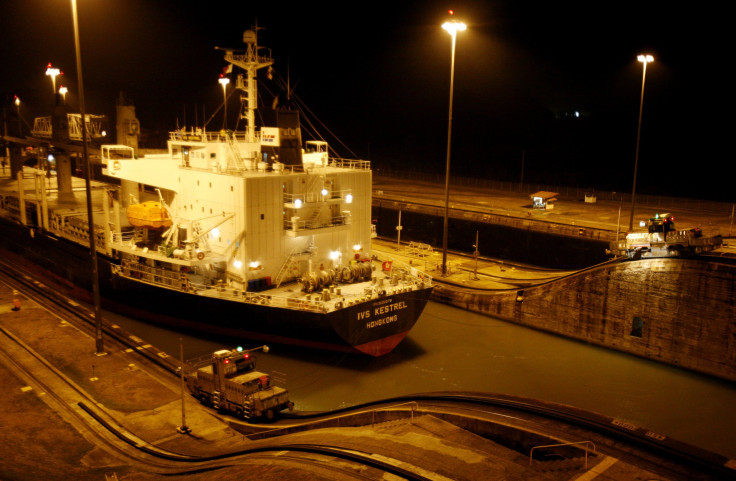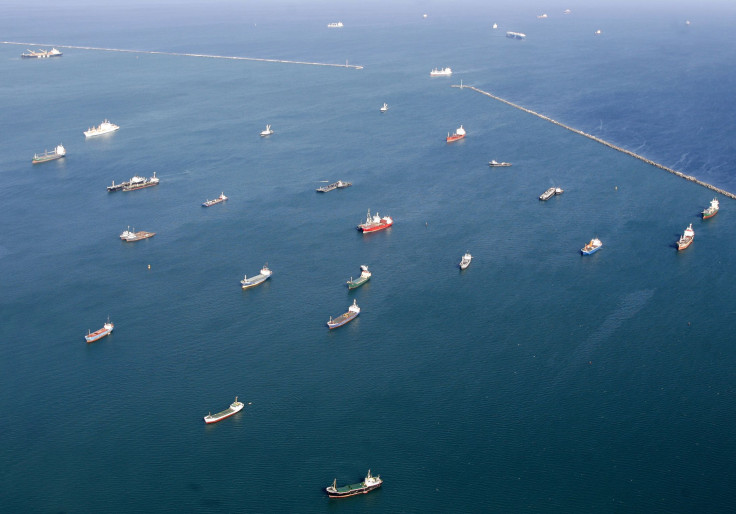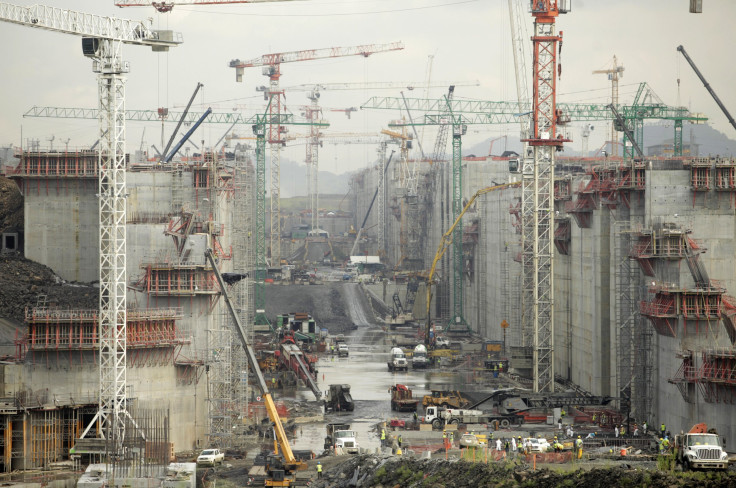Panama Canal Anniversary 2014: The World-Changing Economic Impact Of The Canal

It was as if the convenience of sending a letter changed in just one day from the Pony Express to Gmail.
That’s about how transformative the opening of the Panama Canal was on this day in 1914, when the 48-mile (77-km) canal connecting the Pacific and Atlantic Oceans was formally opened with the passage of the cargo ship SS Ancon. The momentous event fulfilled a 400-year dream that cost billions of dollars, thousands of lives and dozens of previous failed attempts, going back to the days of the Holy Roman Empire. The largest engineering project ever undertaken by the United States up to that time, the canal boosted shipping, strengthened the American economy in a multitude of ways, and transformed global trade.
Already back in 1534, King Charles V of Spain had sought a passage across the Panamanian isthmus to speed the arduous months-long journey undertaken by ships traveling between Peru and Spain. Three hundred and eighty years later, the route hadn’t become that much easier or faster for ships carrying goods from coast to coast. In the early 1900s, a journey from Virginia to California required sailing around Cape Horn at the bottom of South America, a treacherous five-month journey that wrecked many ships due to the strong winds, enormous waves and occasional icebergs that drifted up from Antarctica. The other two options weren’t that much better: traveling to the thinnest part of Panama, disembarking to travel overland and then reloading the cargo on another ship to finish the journey; or traveling by rail across the breadth of North America. The same journey would take just two weeks using the Panama Canal.
The U.S. took over work in the isthmus of Panama area from the French in 1904, when the U.S. also formally assumed control of the area where the future canal would be. President Theodore Roosevelt had deemed a canal to be a strategic interest of the United States.
Ten years later, dignitaries hailed it as the Eighth Wonder of the World when it first opened, a reputation it seemed to live up to in following decades. In its first year, 1,000 ships passed through, a rate that reached 15,000 by 2008.
The canal transformed world trade by facilitating shipping from the West Coast of the Americas to Europe and from Asia to the East Coast, but its biggest impact was on the U.S. economy. In the early 1900s, the United States had a problem: The nation had plenty of resources, but it took time and money to get them around the country.
“The center of the American economy was on the East Coast, but there were raw materials and goods in the Pacific which it desired,” said canal historian Carlos Yu. Almost singlehandedly, the canal addressed that challenge, helping move millions of tons of oil and wood and other raw materials from California and the Pacific Northwest to the growing industrial cities of New York, Boston, Atlanta and others. In those early decades, American trade dominated the canal, with about 90 percent of the shipping traffic moving between the coasts.
By easing the trade in raw materials, the canal had the paradoxical effect of slowing the development of California and integrating it more with the rest of the country. Before the canal, California was consuming about 95 percent of its oil and much of its other raw materials due to its isolation from the rest of the country. “You couldn’t move the stuff until the Canal was built, it was like a little isolated island,” said Noel Maurer, the author of “The Big Ditch,” a history of the canal.
If the canal hadn’t been built, California would have had another 20 years of industrialization, explains Maurer. It was originally developing quite quickly because energy was cheap, but when it got easier to ship raw materials, it focused on that instead.
“California was on a path to becoming a separate industrial center, and that got knocked back,” Maurer said.
The East Coast was dependent on the canal for its rapid development in the pre-war years. “If you shut the canal down in 1930, oil prices would have spiked all over the East Coast. The construction industry would have had to source new lumber. Steel plants would have had to resource iron,” Maurer said. “The person in the street would have felt it.”
Another country whose economy was transformed by the canal was Chile, which struggled to efficiently ship some of its rich natural resources. Since copper had a relatively high value-to-weight ratio, it was lucrative to ship, but iron was another story.
“You had all these great iron deposits, but Chile was not really worth anything,” Maurer said, because it was so difficult to ship over long distances. With the opening of the canal, “Chilean iron really took off,” Maurer said, noting that Bethlehem Steel built special designs for the raw material once it was able to cost-effectively ship tons of it through the canal.
But after World War II, the canal’s impact started to decline due to technological developments and changes in trade patterns.
Oil production took off across the country and across the world and rapidly growing California started to consume more of its raw materials. Railroads started to use diesel engines, which made cross-country transportation much more efficient.
Those trends intersected with shifts in global trade, with the rise in eastbound traffic from Japanese manufacturers ferrying cars, televisions and consumer electronics to ports in California and that state’s agricultural bounty going to Asia. That reduces the need for the canal, since trains started to move more of that material across the United States.
By the 21st century, the canal got a boost in popularity due to multiple labor strikes that slowed parts of the U.S. transportation infrastructure. To feed a booming demand in China, coal started to move from the U.S. through the canal to China in 2006.

If the canal were to shut down tomorrow, the consequences wouldn’t be as catastrophic as they would have been in the first half of the 20th century, but “it would be reasonably dramatic,” says Dr. Jean-Paul Rodrigue, a historian at Hofstra University. “The canal handles about 5 percent of global shipping. It’s not small, but it’s not big.” Any closure would definitely impact ports on the East Coast and their trade with Asia.
While it used to be one of the only ways to send things quickly along very important trade routes, the canal is now competing with overland traffic. Long waiting times to enter the canal often send big container ships around Cape Horn and some of the new fleet of tankers are simply too big to make it through the relatively shallow canal.
But Panamanian authorities have responded to the new demand with an aggressive $5.3 billion expansion project that will widen the canal on both the Atlantic and Pacific sides, creating a wider channel to accommodate the largest ships on the water. Post-Panamax, as it's called, is set to be completed next year.
Though it could gain importance in the coming years as Asian trade continues to expand and railroad traffic in the U.S. starts to clog up, “it’ll never see the world-altering importance it saw in the 1920s and '30s,” said Maurer.

© Copyright IBTimes 2024. All rights reserved.












